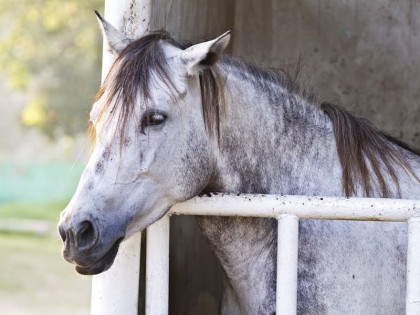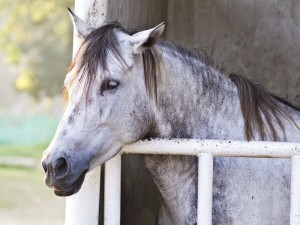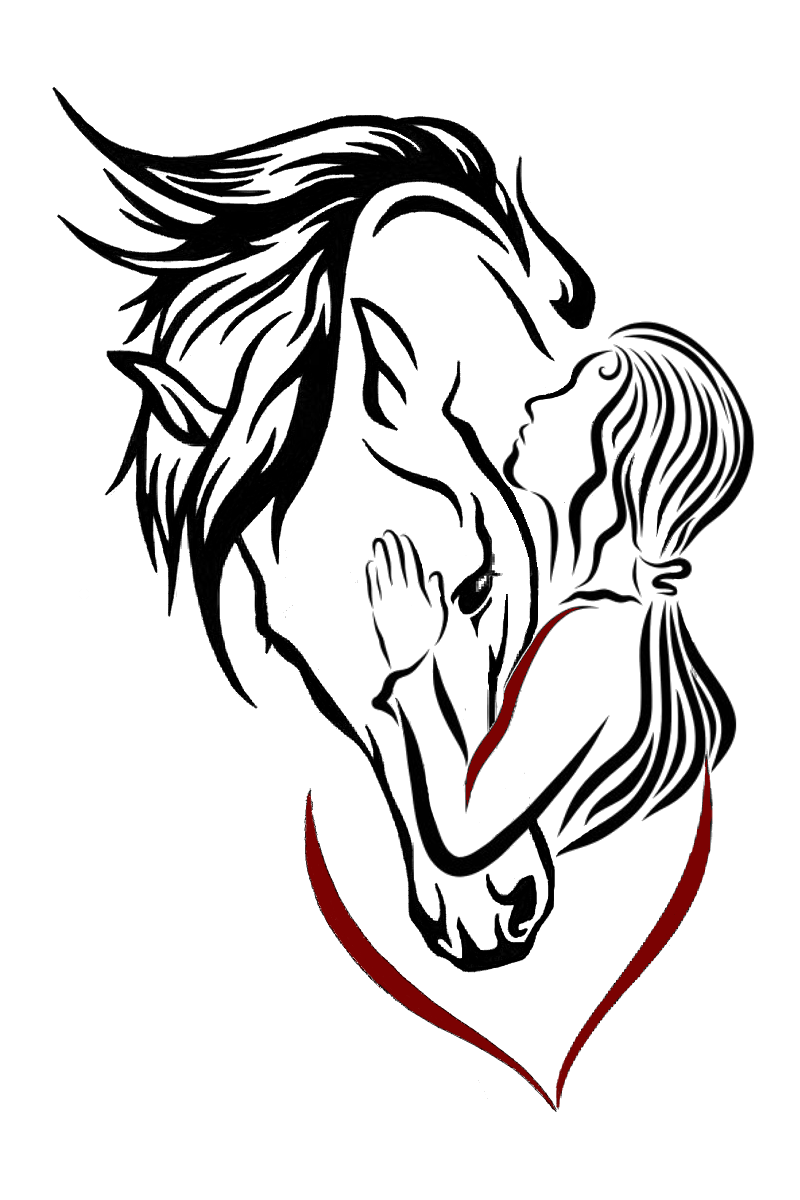Handling Head Trauma

The area of your horse’s face from in front of his ears down to the nose is basically composed of a thin layer of skin  covering bone. There is little muscle here, and virtually no fat. The cranial bones in this area are the frontal bone, nasal bone, and the bony orbit. The critical structures in this area are the eyes, the sinuses that underlie the thin frontal and nasal bone, and the conchae that line the nasal passage.
covering bone. There is little muscle here, and virtually no fat. The cranial bones in this area are the frontal bone, nasal bone, and the bony orbit. The critical structures in this area are the eyes, the sinuses that underlie the thin frontal and nasal bone, and the conchae that line the nasal passage.
Due to the lack of muscle in this area, direct trauma to the front of a horse’s head can cause fractures of the nasal and frontal bones. If these fractures include a laceration through the skin, bone chips and other debris can end up in the sinuses, causing infection. Even if the skin is intact, fracturing of these bones can lead to a depressed area after it heals.
If the nasal conchae are damaged, swelling and bleeding can occur. Swelling of the conchae can impede airflow through the nasal passages. Because of their position on the sides of the skull, a horse’s eyes are in a very precarious position. Horses are one of the few animals with a complete bony orbit. This helps protect the eyeball itself, but leads to potential fractures of this bony arch. Fractures of the orbit can result in pieces of the displaced bone damaging the eyeball or the vessels or nerves surrounding the eye, potentially resulting in vision damage.
2. The sides of the head
The sides of the horse’s head present a slightly different issue besides bony fractures, although with a hard enough blow, fractures of the bones and teeth can occur. However, the masseter muscle covers a large portion of the cheek and many other small muscles also cover the bone in this area. These muscles are used for chewing and also to move the horse’s prehensile lips. What does exist superficially is the facial nerve and prominent facial vessels. This cranial nerve is almost directly under the skin and on top of the muscle. Trauma to the side of the horse’s head can cause damage to this nerve, which can lead to drooping lips and a horse with an inability to chew normally. Damage to the vessels in the area can cause hematomas. If the blood supply is completely severed, tissue damage can occur.
3. The chin
The “chin” of the horse is similar to the front of the head in that it consists of a thin layer of skin over bone with little to no muscle in between. Trauma to this area can easily cause skin lacerations, and because the nerves and blood supply are superficial, vessel and nerve damage leading to hematomas and a drooping lower lip.
4. The poll
The most dangerous part of the head for a horse to damage is the poll. The poll overlies the brain and brainstem and is made up of a cranial bone called the occipital bone. This bone is directly attached to the sphenoid bone. Together, these two bones make up the top, back and bottom of the boney vault that protects the brain. The blood supply to the brain comes from vessels that run between the brain and the sphenoid bone, and most of the cranial nerves exit the brainstem through foramina in the sphenoid bone.
Direct trauma to the poll is usually caused when a horse rears and falls over backwards. Because of the prominence of the occipital bone, it is often the first part of the horse to impact the ground. This is especially dangerous if the surface is concrete or a similar hard material. Impact can lead to a fracture of the occipital bone and/or the sphenoid bone. Because of the proximity to the brain, direct trauma to the poll can lead to instant death. In less severe cases, because the blood supply and nerves exiting the sphenoid bone are often damaged, as is the brainstem, horses can be left with permanent neurological damage and may unable to rise or, if they can get up, cannot walk.
WHEN TO SEEK HELP
No matter what, cases of direct trauma to the poll require immediate veterinary intervention. If nervous system damage is minimal, early and aggressive treatment with medications to stop brain swelling and limit inflammation may save a horse’s life. The other three areas of the head are not usually as black and white. So how do you decide if you should call your vet? A good motto is: if in doubt, call. If nothing else, speaking to someone can ease your mind. Also, if your veterinarian does not practice chiropractic, it is important to have your horse examined by a veterinary chiropractor once any critical neurologic and medical issues have been addressed. He or she can assess and correct any subluxations in the joints of the head.
Seek immediate veterinary care for head trauma if your horse displays any of the following:
• Bleeding from the nose, eyes, or ears
• Your horse fell to the ground and did not immediately get up, or will not get up
• When he does get up, he acts stunned or cannot seem to walk normally or “get his bearing” • There’s a laceration through the skin, with or without bleeding
• You notice any swelling
• You notice an area of the skull or orbit that appears sunken or misshapen
• Your horse is holding his head in a funny position
• Any part of your horse’s head is not the same from left to right– an ear droops, a lip droops, one eye doesn’t blink like the other.
Jennifer L. Miller, DVM, CVSMT, CVA owns Prairie Rivers Holistic Veterinary Service in Byron, Georgia. After practicing conventional equine veterinary medicine for a number of years, she came to realize it did not off er all the answers to her patients’ needs. In an effort to provide well-rounded, excellent care she chose to expand her education. She obtained certification in Veterinary Spinal Manipulation Therapy from the Healing Oasis Wellness Center, and in Veterinary Acupuncture from the Chi Institute. She has also studied Applied Kinesiology and Craniosacral Therapy. Prairieriverholistics.com
Original Article Here
